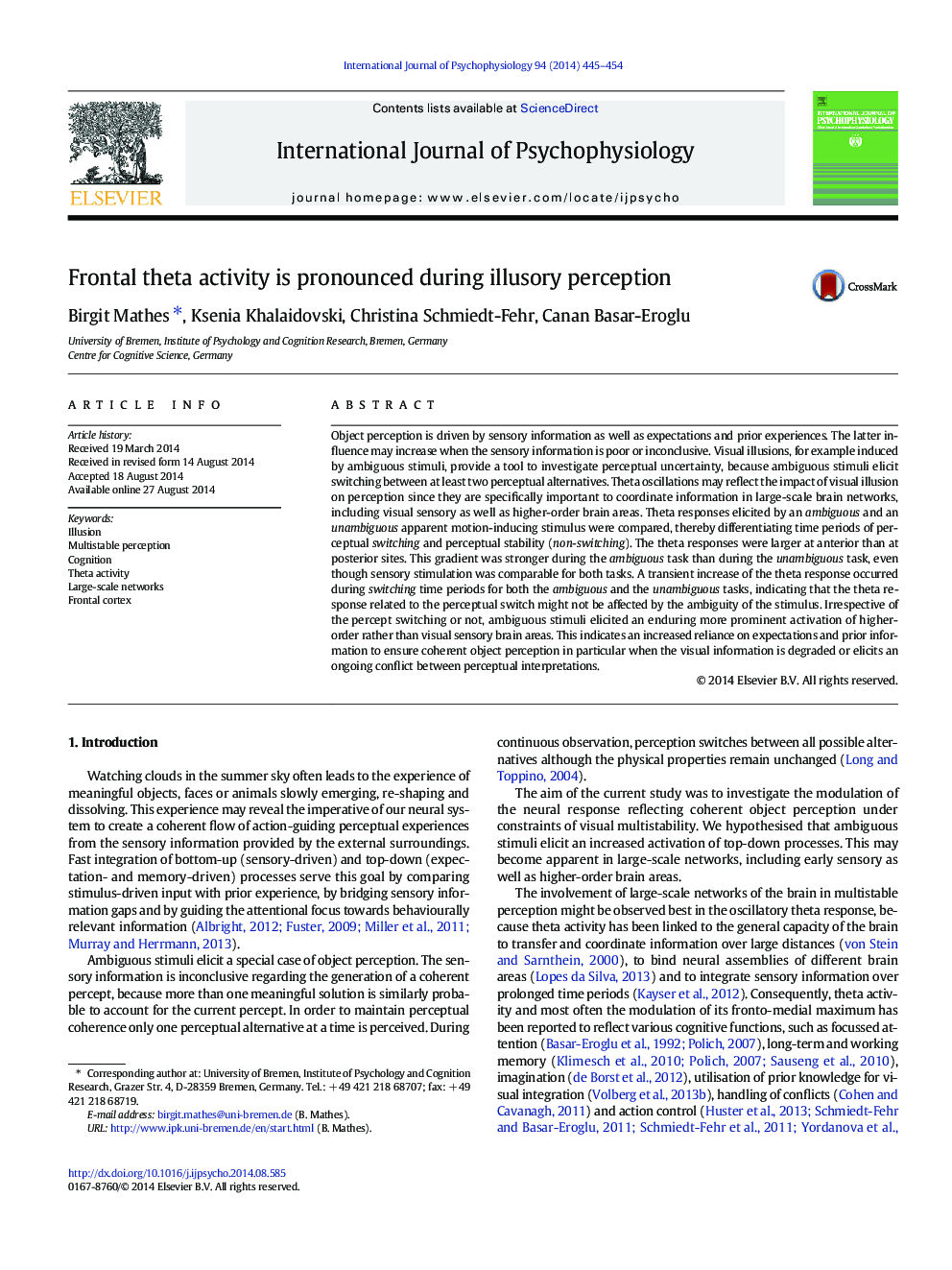| Article ID | Journal | Published Year | Pages | File Type |
|---|---|---|---|---|
| 930182 | International Journal of Psychophysiology | 2014 | 10 Pages |
•Ambiguous perception elicits a frontal maximum of theta activity.•This emphasises the importance of top-down processes for ambiguous perception.•Minor changes in stimulus properties effect large-scale theta networks.•Object perception is realised in more than one way.
Object perception is driven by sensory information as well as expectations and prior experiences. The latter influence may increase when the sensory information is poor or inconclusive. Visual illusions, for example induced by ambiguous stimuli, provide a tool to investigate perceptual uncertainty, because ambiguous stimuli elicit switching between at least two perceptual alternatives. Theta oscillations may reflect the impact of visual illusion on perception since they are specifically important to coordinate information in large-scale brain networks, including visual sensory as well as higher-order brain areas. Theta responses elicited by an ambiguous and an unambiguous apparent motion-inducing stimulus were compared, thereby differentiating time periods of perceptual switching and perceptual stability (non-switching). The theta responses were larger at anterior than at posterior sites. This gradient was stronger during the ambiguous task than during the unambiguous task, even though sensory stimulation was comparable for both tasks. A transient increase of the theta response occurred during switching time periods for both the ambiguous and the unambiguous tasks, indicating that the theta response related to the perceptual switch might not be affected by the ambiguity of the stimulus. Irrespective of the percept switching or not, ambiguous stimuli elicited an enduring more prominent activation of higher-order rather than visual sensory brain areas. This indicates an increased reliance on expectations and prior information to ensure coherent object perception in particular when the visual information is degraded or elicits an ongoing conflict between perceptual interpretations.
